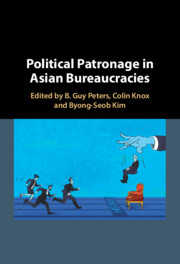Book contents
Part II - Two-Party/Multi-Party Systems
Published online by Cambridge University Press: 05 October 2023
Summary

- Type
- Chapter
- Information
- Political Patronage in Asian Bureaucracies , pp. 97 - 228Publisher: Cambridge University PressPrint publication year: 2023



